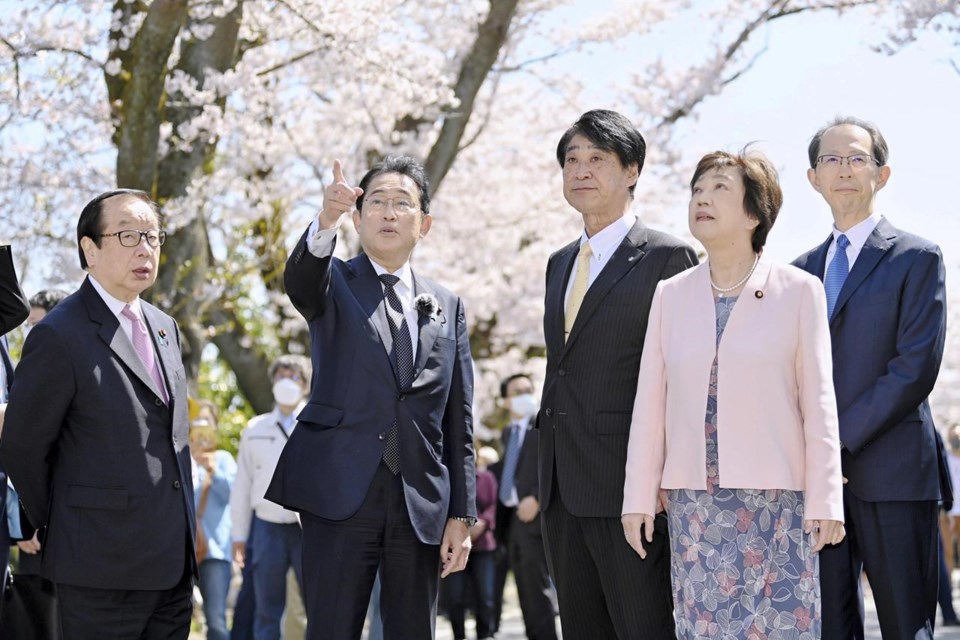TOKYO (AP) — Evacuation orders were lifted in small sections of a Japanese town just southwest of the on Saturday, in time for the area’s popular cherry blossom season, and Prime Minister Fumio Kishida joined a ceremony to mark the reopening.
The area of about 4 square kilometers (1.5 square miles) where entry restrictions were lifted is part of Tomioka town, most of which had already been reopened since triggered triple meltdowns at the Fukushima Daiichi nuclear power plant.
Former residents and visitors celebrated the latest reopening as they strolled along a street known as “the cherry blossoms tunnel.”
Koichi Ono, 75, was back to the neighborhood where he grew up and lived all his life until he was forced to evacuate. “After 12 years, I can finally return to my life here," he told NHK television. “The disaster hit when I was just starting my retirement life, so I'm starting all over again.”
Ono, who learned indigo and vegetable dying while evacuating, wants to open a workshop to serve as a meeting place for people. “I hope more people come and visit.”
At the ceremony, Kishida pledged to keep working to reopen all no-go zones.
“The lifting of the evacuation is by no means a final goal, but the start of the recovery,” Kishida said.
The 2011 disaster caused massive amounts of radiation to leak from the plant, and more than 160,000 residents had to evacuate from across Fukushima, including about 30,000 who are still unable to return home.
Tomioka is one of 12 nearby towns fully or partially designated as no-go zones. The two sections in Tomioka that reopened for the first time in 12 years represent one-fifth of the worst-hit no-go zone and were selected by the government along with several other locations in the region for intensive decontamination.
But jobs, daily necessities and infrastructure remain insufficient, making it difficult for younger people to return, and families with small children worry about possible radiation effects.
"The living environment and many other things still need to be sorted out,” Tomioka Mayor Ikuo Yamamoto told reporters.
In the newly reopened Yonomori and Osuge districts of Tomioka, just over 50 of about 2,500 registered residents have reportedly returned or expressed intention to go back to live. Only about 10% of the town’s pre-disaster population of 16,000 have returned since large areas of Tomioka reopened in 2017.
Town surveys show a majority of former residents say they have decided not to return because they have already found jobs and educations and built relationships elsewhere.
The evacuation order was lifted in several sections of another hard-hit town, Namie, northwest of the plant, on Friday. The reopened area accounts for only about 20% of the town.
“I have mixed feelings because there are many residents who still cannot return or have no idea when they can return," said Namie Mayor Eiko Yoshida at an evacuation-lifting ceremony on Friday.
Mari Yamaguchi, The Associated Press




